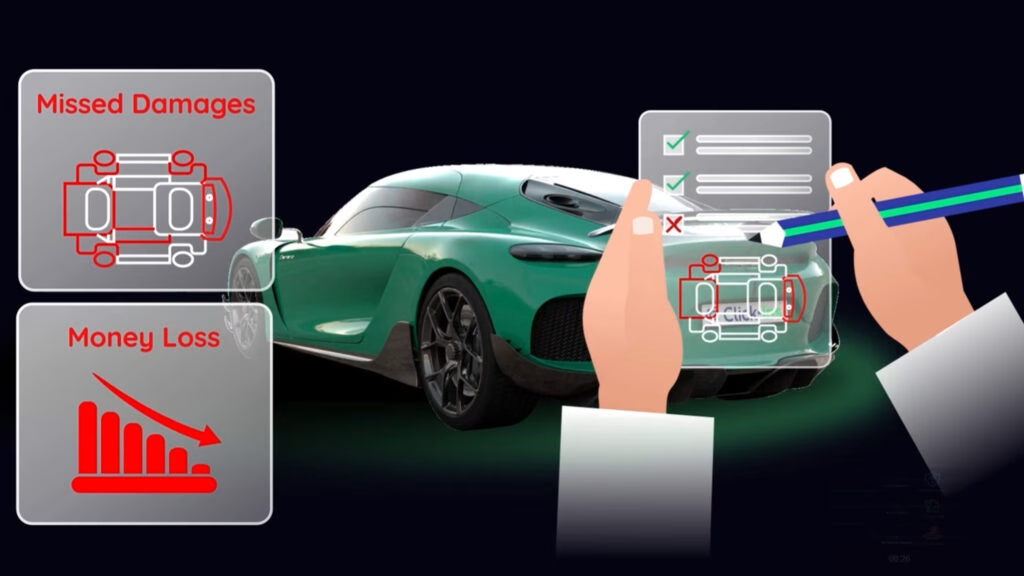How are AI-Powered Car Damage Tools Changing Insurance Claims?
Imagine snapping a few photos of your car with your phone and, within minutes, getting a detailed report on every scratch, dent, or ding—some so tiny you’d never spot them yourself. That’s not science fiction anymore. AI-driven car damage detection tools are rapidly transforming how insurance companies, rental agencies, and even dealerships assess vehicle condition. But what does this mean for everyday drivers, and is it all upside?
Can Smartphone Photos Really Reveal Hidden Car Damage?
Turns out, yes—sometimes a little too well. The latest AI systems, like the one developed by Israeli startup Click-Ins, can analyze standard smartphone photos to detect damage that would otherwise go unnoticed. Here’s how it works: your insurer sends you a link, you take eight photos circling your car, and the AI gets to work. It strips away reflections and dirt, giving a crystal-clear view of your vehicle’s true state.
This isn’t just about catching obvious fender benders. The technology can flag micro-scratches, tiny dents, and other imperfections that human adjusters might miss. For insurance companies, that means a more accurate record of your car’s condition before and after an incident. For drivers, it could mean fewer disputes over what counts as “new” damage.
Why Are Insurers and Rental Companies So Eager to Use AI Damage Detection?
Speed and savings are the big draws. Traditional claims adjusters often spend hours (or days) scheduling inspections, traveling to see vehicles, and writing up reports. With AI, much of that work is automated. Claims that used to require a human visit—like a scrape from a parking lot pole—can now be handled remotely, sometimes in under an hour.
According to industry analysts, this could cut claim processing times by up to 70 percent. That’s not just good for insurers; it means drivers get answers (and payouts) faster. Plus, by creating a digital “paper trail” of your car’s condition, these systems help reduce fraud—a persistent headache for the industry.
Are There Downsides for Drivers? What About Fairness?
Here’s where things get tricky. Some renters have reported being billed hundreds of dollars for damage they couldn’t even see, all thanks to AI-powered scanners. The concern is that these tools might be a little too good at their job, flagging every imperfection as a potential claim. And because the technology is still new, there’s a learning curve—for both companies and customers.
Consumer advocates warn that, without clear standards, drivers could be held responsible for pre-existing flaws or normal wear and tear. The key is transparency: making sure everyone knows what the AI is looking for, and how those findings will be used. Some insurers are already addressing this by sharing before-and-after photos with customers and providing clear dispute processes.
How Else Could This Technology Be Used?
The potential goes far beyond insurance. Auto auction houses are starting to use AI to document vehicle condition, streamlining the process and reducing disputes between buyers and sellers. Car transporters can record a vehicle’s state before and after shipping, protecting both parties if damage occurs in transit. Even dealerships are exploring AI tools to make trade-in appraisals more consistent and objective.
In fact, a 2023 report from McKinsey & Company predicted that AI-powered inspections could save the global auto industry billions of dollars annually by reducing manual labor and minimizing fraud. That’s a win for businesses—but only if the technology is applied fairly.
What Should Drivers Do to Protect Themselves?
If your insurer or rental company asks you to submit photos, take your time. Clean your car, find good lighting, and follow their instructions carefully. Keep copies of all images you submit. If you’re ever billed for damage you don’t recognize, ask to see the AI’s findings and compare them to your own records. Don’t be afraid to dispute questionable claims—most companies are still refining their processes and want to avoid negative publicity.
The big takeaway? AI-powered car damage detection isn’t about perfection—it’s about smarter adjustments. Start with one change this week—maybe snapping your own “before” photos when you rent or insure a car—and you’ll likely spot the difference by month’s end.

